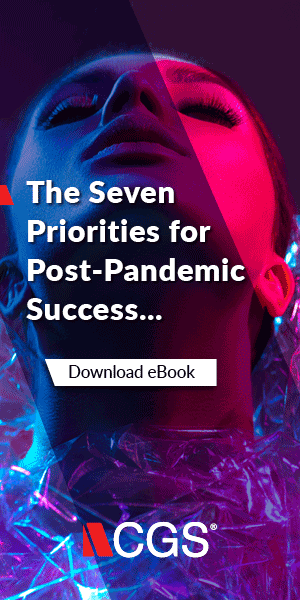Expand collaboration capabilities in PLM to accelerate retail growth

For too long the full promise of digitized PLM solutions has been under-realized by all but a few brands and retailers. Now, during the COVID-19 pandemic, PLM’s significant potential for initiating cost savings and efficiencies is gaining new appreciation. The challenges to turning this appreciation into meaningful innovation however remain.
Retailers and brands talk about the importance of putting the consumer at the center of all activity. Initiatives bringing focus to the consumer get lost amongst the plethora of technology offerings like magic mirrors, digital smart signs, and in-store mobile devices. For many executives this has become an urgent imperative. However, this is misguided in that they miss the greatest opportunity of all: making sure that the product offering entices the consumer to make a purchase.
Consumer desires are interpreted and conceptualized in the design process at the start of PLM. Fully digitized PLM creates the capability of collaborating on design with suppliers, manufacturers, retail trading partners, social influencers and for some, consumers. Digitized PLM fully exploited, yields competitive advantage in design integrity, cost management and ultimately consumer delight. Regrettably, for many, this opportunity goes unrealized without specific actions and discipline at the heart of any transformation.
Collaboration is the Key to Retail Growth:
Digitized PLM is foundational to PLM’s operational transformation. The technology is relatively straightforward but if implemented without a deliberate effort to drive process and cultural change, the full promise of PLM’s benefits will never be realized. Over the past decade there has been far more discussion about collaboration than actual implementations of it. This is attributable not to limitations of technology but more to organizational inertia.
IT departments are by mission tasked to implement and maintain transactional systems supporting processes that are by nature, linear. In fact, the whole supply chain, at its most fundamental, is simply the management of a series of sequential events from one value-added activity to the next. Processing purchase orders, inventory movements, and customer sales orders are highly routinized procedures. PLM is not.
The PLM process is uniquely complex because the activities are iterative, collaborative and require adaptation to each merchandise story, garment, and fabric.
So why do so many find collaboration so challenging? Genuine collaboration requires openness and trust amongst all partners. Leadership must set the strategy and the expectation that all participants will work under the same collective paradigm. It places a responsibility on all participants to redefine relationships between team members who in the past, have only focused on cost and speed. Collaboration is critical for PLM and essential to successfully employ leading practices including virtual sampling, seasonless design and fast fashion.

Virtual Sampling:
We can see now how outdated the product sampling process has been historically and agree that the logistics and cost of moving physical products through the development process has compromised the ability to quickly and efficiently bring products to market.
We have available today an array of tools able to make the product development process completely virtual. Electronic drawing pads, digital POMS, silhouettes, 3D Imagery, shared fabric and color libraries can be employed to create and share full technical and visual specifications virtually. Beyond the obvious advantage of having all the information in a single shared repository, virtual PLM compresses, if not eliminates, entire rounds of physical sampling and all its associated costs. The use and value of digitally represented products can continue into the merchandising and virtual line planning process even though the physical product has yet to be produced.
The value of PLM and digital designs can extend beyond the design process to business development. Using virtual samples, merchandisers and social influencers, can collaborate on trend and fashion direction. This strengthens relationships with consumers as it offers retailers more targeted brand positioning.
Seasonless Design:
T “Season” has been the accepted construct driven by the fashion and retail industry. The consumer has been forced to adapt to this cycle. Recently, successful retailers and brands have recognized this and transformed their models to respond to the consumer’s true preferences of what to buy and when. They have fully embraced leading technology accelerating the speed and frequency with which new products can be brought to market exciting the consumer. This new model aligns the technology and business operations directly to the consumer starting with the practice known as seasonless design. This creates a clear and competitive advantage.
Benefits of seasonless design are cumulative. Designers, freed from the hamster-wheel generation of continuous quota-like season-specific output, focus on what they were trained to do: develop eye-catching on-trend products that define the brand as it entices the consumer.
Line planning then benefits from the continuous development of design choices. Without seasonal peaks and troughs supplier capacity planning becomes smoother. The net effect is more predictable production schedules and lowered unit cost. These benefits accrue only if the approach is supported by a digitized technical capability staring with PLM.
Fast Fashion:
Fast fashion is not something that occurs sporadically, it is an operating philosophy. Fast fashion addresses two of the most important issues in retailing today. First, it puts fresh fashion in stores on an accelerated schedule keeping consumers interested and loyal. Second, the benefit of an accelerated turnover has a positive impact on the cash-to-cash cycle.
Fast fashion begins with a design process informed by consumer desires and market trends. One of the benefits of an increased cycles of design and production is risk mitigation. Financial risk considerations all too often influence product design to become overly safe and conservative. This promotes the sameness of the product offering resulting in consumer apathy.
Manufacturing in small lots minimizes the risk of any one design misfire. This encourages merchants to consider edgier design to peak the consumers interest.
An additional benefit of increased design and production cycles is the rate at which consumer preferences are captured and incorporated back into design. For retailers and brands whose design and production cycles are measured by seasons, it may take six or more months before a trend is identified and fed back into the design and productions cycle often missing peak interest in the trend.
The Full PLM Value
These times, made even more challenging by the current pandemic, find many retailers and brands become defensive and narrow their vision becoming preoccupied with unit cost and risk mitigation. This is a distraction from creating benefits that accrue from a nimble design approach. The belief that the best way to serve the consumer is to lower costs simply isn’t true: particularly when it lowers the perceived value or quality of the product. Recognition of PLM’s full promise is essential for retailers and brands to survive. A critical part of that is recognizing PLM’s full value anchoring a comprehensive operational strategy woven together with complete, accurate sharable data throughout the cash to cash cycle.


